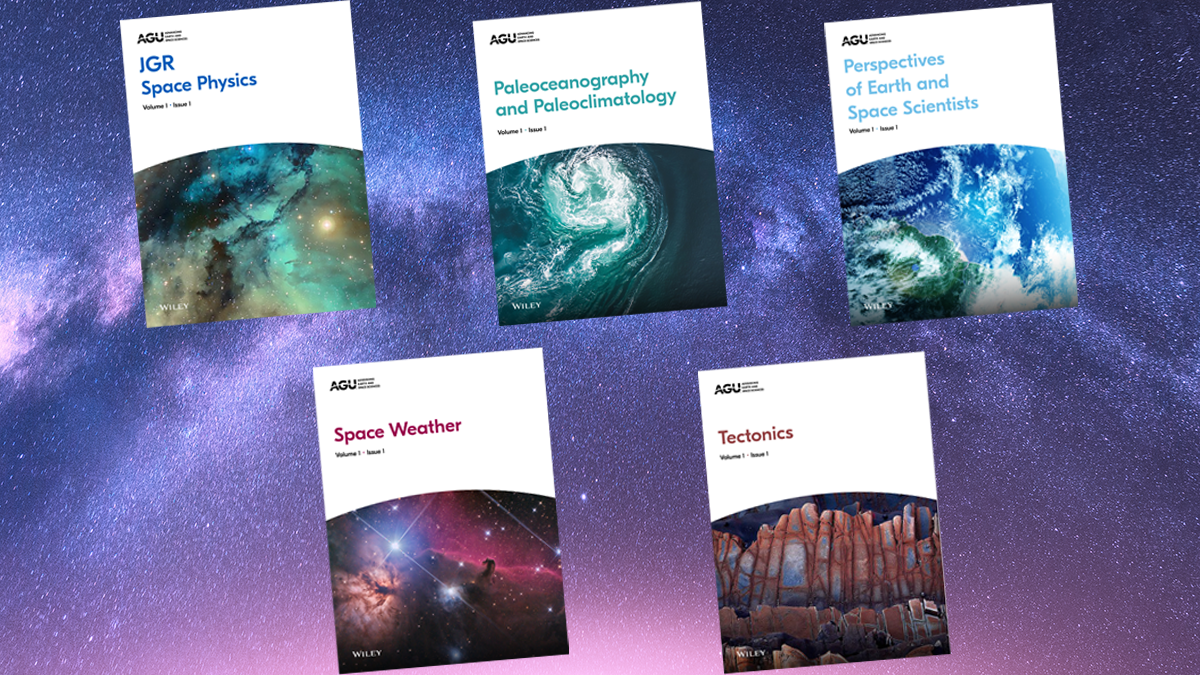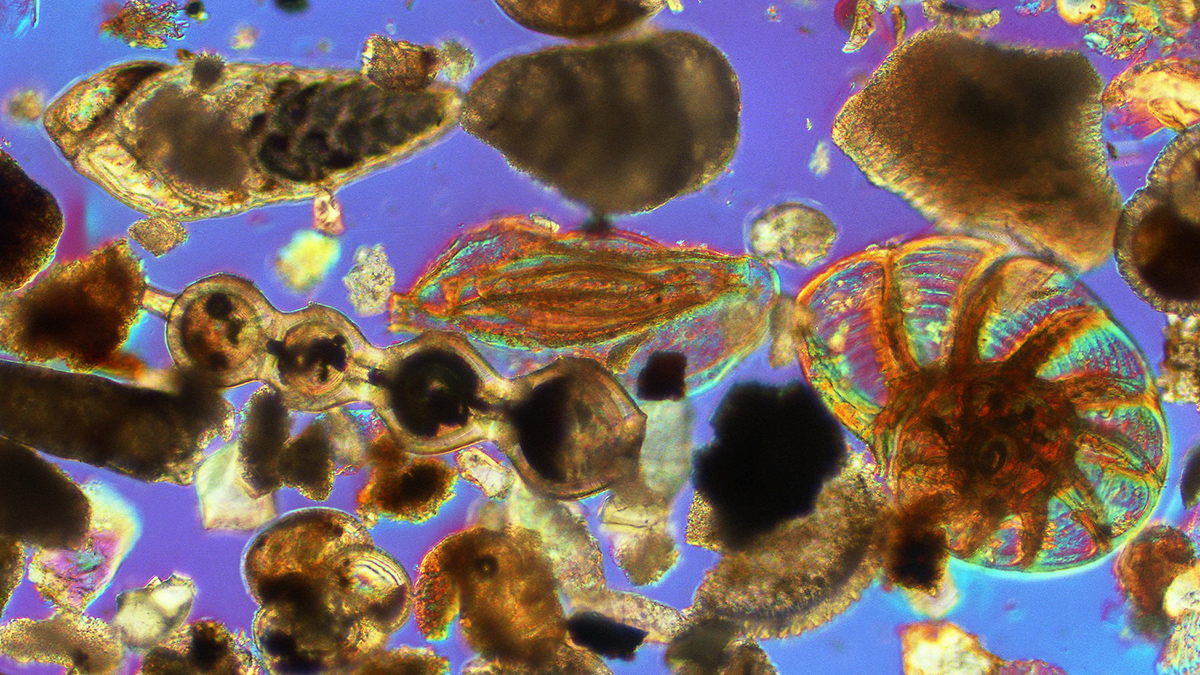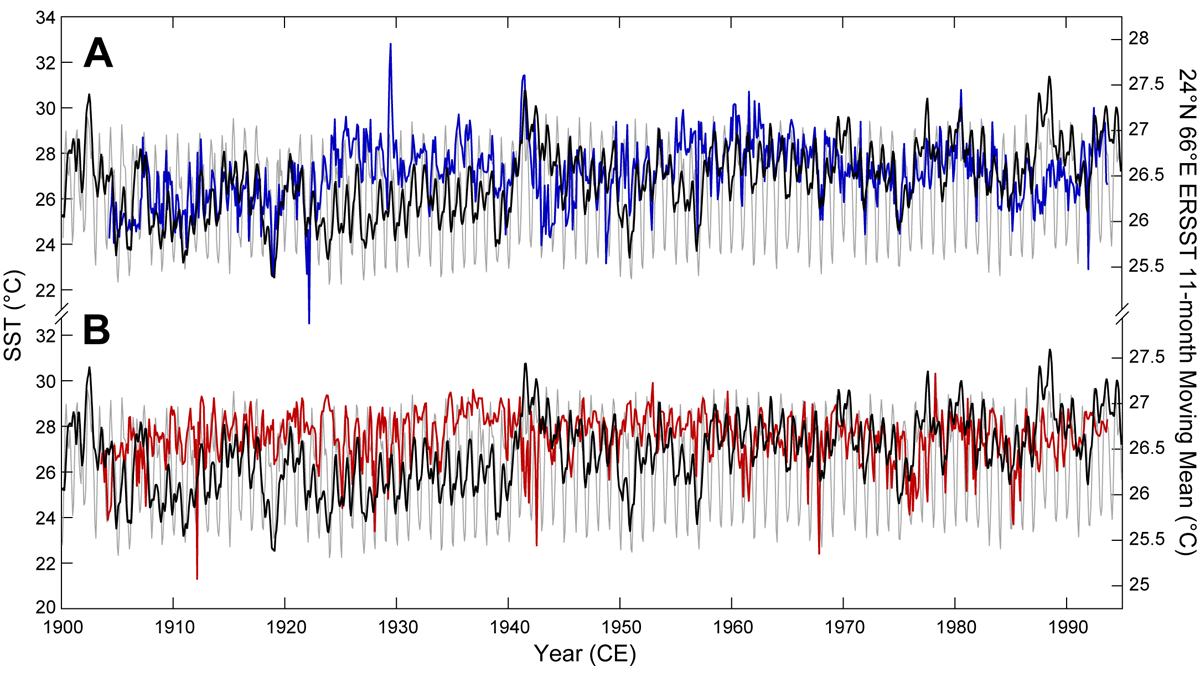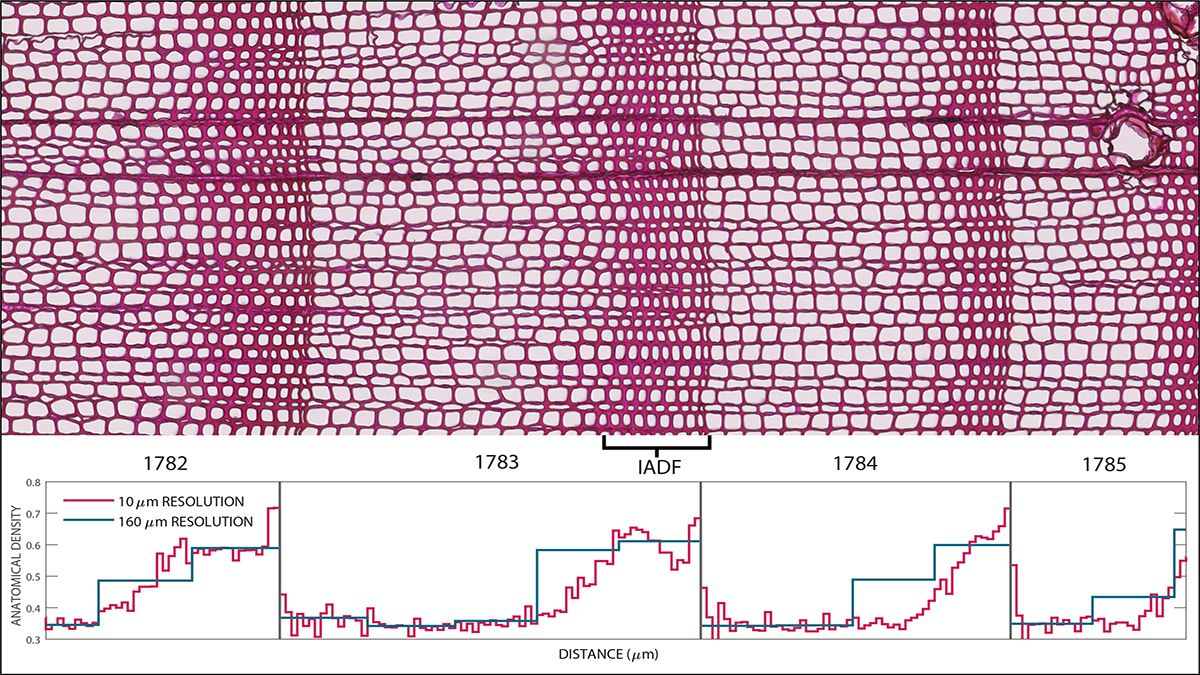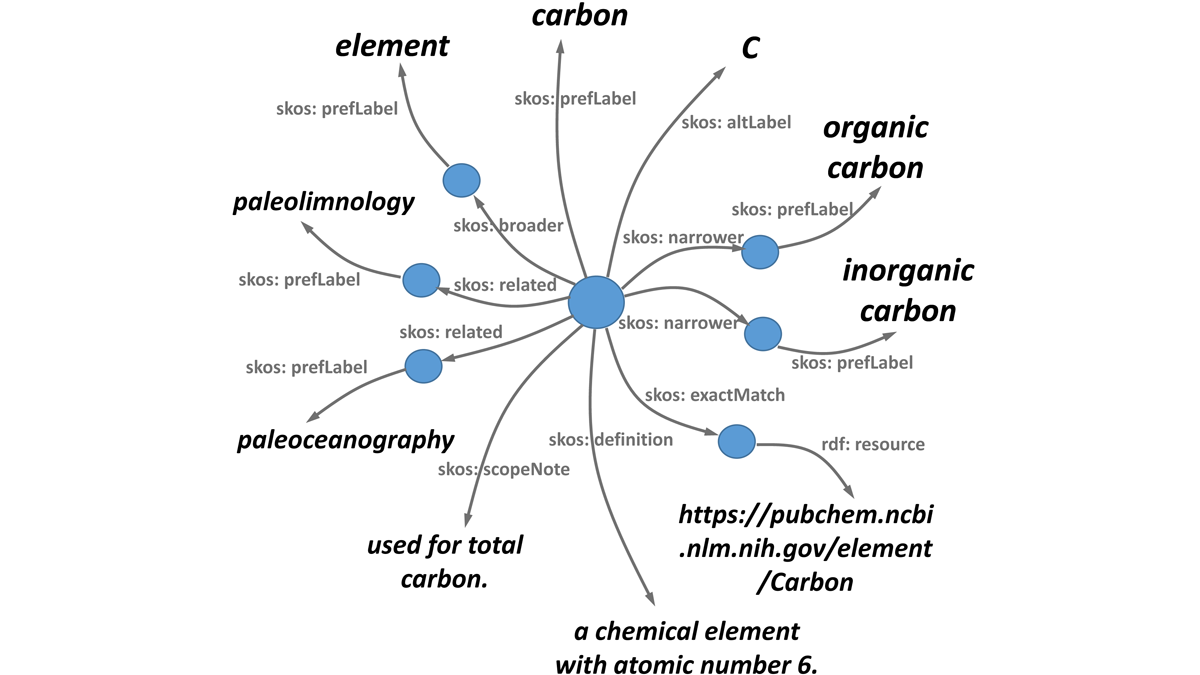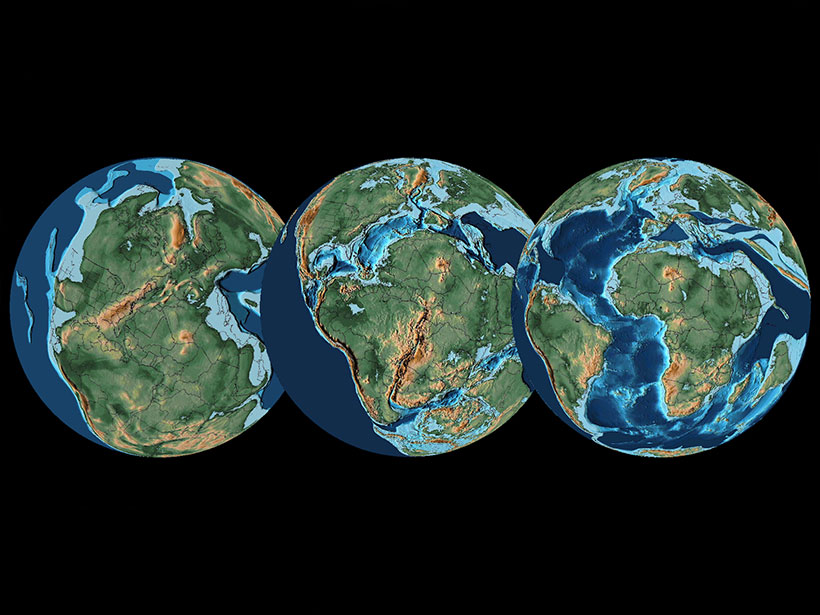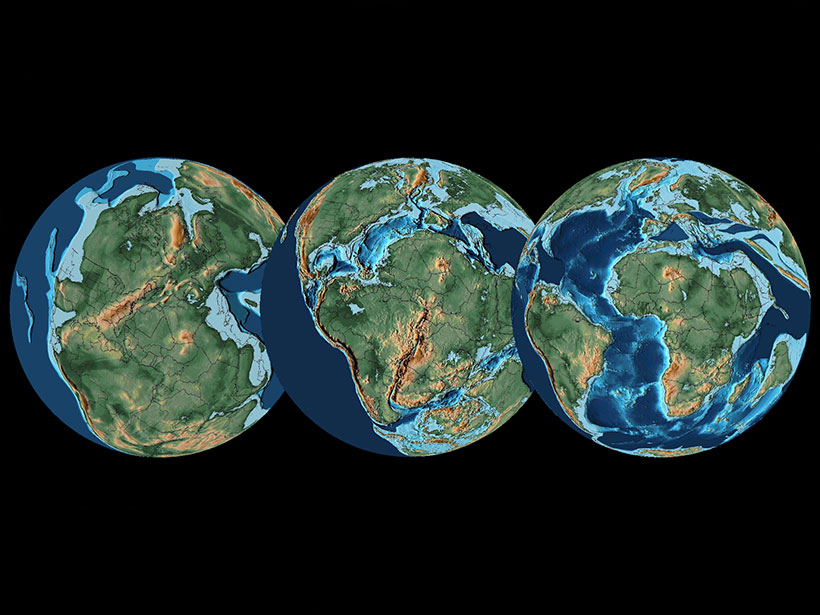AGU is excited to welcome new Editors-in-Chief for five of our journals in 2026.
Paleoceanography and Paleoclimatology
Taking Our Paleoceanographic Tools to the Next Level
A new modeling study shows that to accurately interpret data derived from an iconic proxy of past Atlantic overturning strength, we must consider the complex factors governing the proxy systematics.
Getting to the Bottom of Cenozoic Deep-Ocean Temperatures
Reconstructing past ocean conditions with oxygen isotopes could provide more information about how Earth’s climate evolved over time, but methods for reconstructing these data can yield varying results.
Unlocking Ultra-High-Resolution Paleothermometry from Sediments
Mass spectrometric imaging techniques used to extract micron-scale organic paleothermometry signatures from Arabian Sea sediments show that they skillfully reflect observations.
How Hot Was the Summer of 1783 Really? Trees Tell Tales
Volcanoes, heat waves, and tree rings – getting the seasonal story straight – a new study finds that volcanic fog lowered summer tree ring density despite the heat.
Finding the Right Words: A Common Language for Data Deposition
Discovering climate signals in the archives: how using a common language for data deposition ensures your data are found, understood and cited.
Simulating 195 Million Years of Global Climate in the Mesozoic
An ensemble of climate simulations identifies factors that drove long-term trends of a prehistoric greenhouse climate.
A 50,000-Year History of Current Flow Yields New Climate Clues
The first high-resolution historical record of Europe’s Glacial Eastern Boundary Current sheds new light on ocean circulation, ice sheet dynamics, and climate change.
Los océanos liberaron dióxido de carbono durante la última deglaciación
Un nuevo registro de isótopos de boro proveniente de sedimentos marinos del Pacifico Sur, ofrece una imagen más completa del intercambio de dióxido de carbono entre el océano y la atmósfera durante el Pleistoceno tardío.

